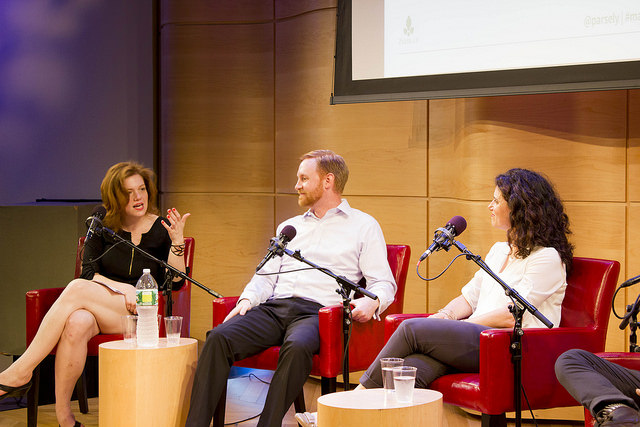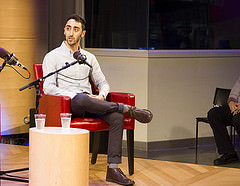Newsrooms Explain How to Make Data Talk
As analytics become more and more common in digital newsrooms, the conversation has shifted from “Should we use analytics,” to “What are analytics actually telling us about our audience?”
It’s a difficult question to answer, with the only consensus appearing so far is that there is no consensus. Digital publishers have different audiences; their business models vary from ads to subscriptions to more; those that cover breaking news have different prerogatives than those that seek to entertain. That means each online publisher must have their own, personal strategy to bring their data to life through an eye for the creative power of seeing stories and trends. We call it: combining the art and science of measuring success in online journalism.

Last week, Parse.ly hosted a panel where Newsweek’s Head of Product, Alex Leo, lead a discussion with three digital publishing executives about how they harness both art and science to improve their newsrooms. The four of them hashed out what they’ve learned, what they still haven’t figured out, and how they’re translating data into meaningful a language their teams understand.
Understanding the context of positive metrics
Often, when data show a positive result, the instinctive reaction is to repeat it. This happens often on the internet, like when Upworthy saw huge success by using their “Curiosity Gap” headlines. To capitalize on this trend, imitator sites started appearing using the same headline format. Internet users tired of the style, which ultimately lowered its effectiveness. It even inspired some (really enjoyable) Twitter accounts.

This isn’t unique to Upworthy, as the panel had experienced similar instances when they had to dial back from going after one metric, even though they were succeeding, because it hurt the overall user experience.
Adam Jaffe, Director of Analytics at Mic told the audience that the original PolicyMic team decided to focus on shares as the guiding metric. Later, though the shares numbers were showing great results, the team realized that an article that had received a huge number of shares on Facebook didn’t have the page views to match. He said seeing that data made them realize that though shares were still a priority, their editorial team had to also focus on better ways to encourage a user to read the article.
Using analytics doesn’t have to mean chasing page views
Contrary to what you might read online about publishers chasing clicks, Rachel Feddersen, General Manager of TheWeek.com and MentalFloss.com talked frequently about how large page views weren’t the goal for their writers or their analytics. Instead of focusing on generating a huge number of page views, she and her team dedicate their efforts to attracting the right audience, and keeping them engaged with the material.
She meets with all of her editors to discuss analytics and how they can be used to reach that goal. When asked about actions the site has taken that may discourage short term high numbers, she referenced the fact that their reporters value retweets from niche influencers more than one from Chelsea Clinton (though she added she was a big fan of Chelsea). Feddersen also talked about a successful YouTube channel with “The Fault in Our Stars” author, John Green, that lives off the website’s domain. She also said though there were concerned initially with the effect of losing that traffic from MentalFloss, the results have been incredibly positive and worth the risk.
Different metrics have different uses
Conde Nast’s Director of Analytics, Dan Stubbs, was quick to point out that metrics differ in their value to publishers, and can sometimes be misleading. He pointed out in particular that what most analytics call “Unique Visitors” reflects the number of unique browser visits. Because each person often opens multiple browsers from multiple devices, he complained that this often touted statistic really doesn’t tell us much.
Stubbs, who has spent years in advertising and analytics, emphasized the difference in analytics for ads versus for editorial impact. If you sell based on impressions and demographics, that’s still important. However, editors need to be given information about how their audience is reacting and how loyal their readers are.
Indeed, keeping the reader experience front of mind was the most consistent theme that all the panelists spoke about.
“Analytics is ultimately feedback from your audience.” –@freejaffe #makingdatatalk
– @SachinKamdar
See pictures from the event and get notified for the next one by following us on Facebook.